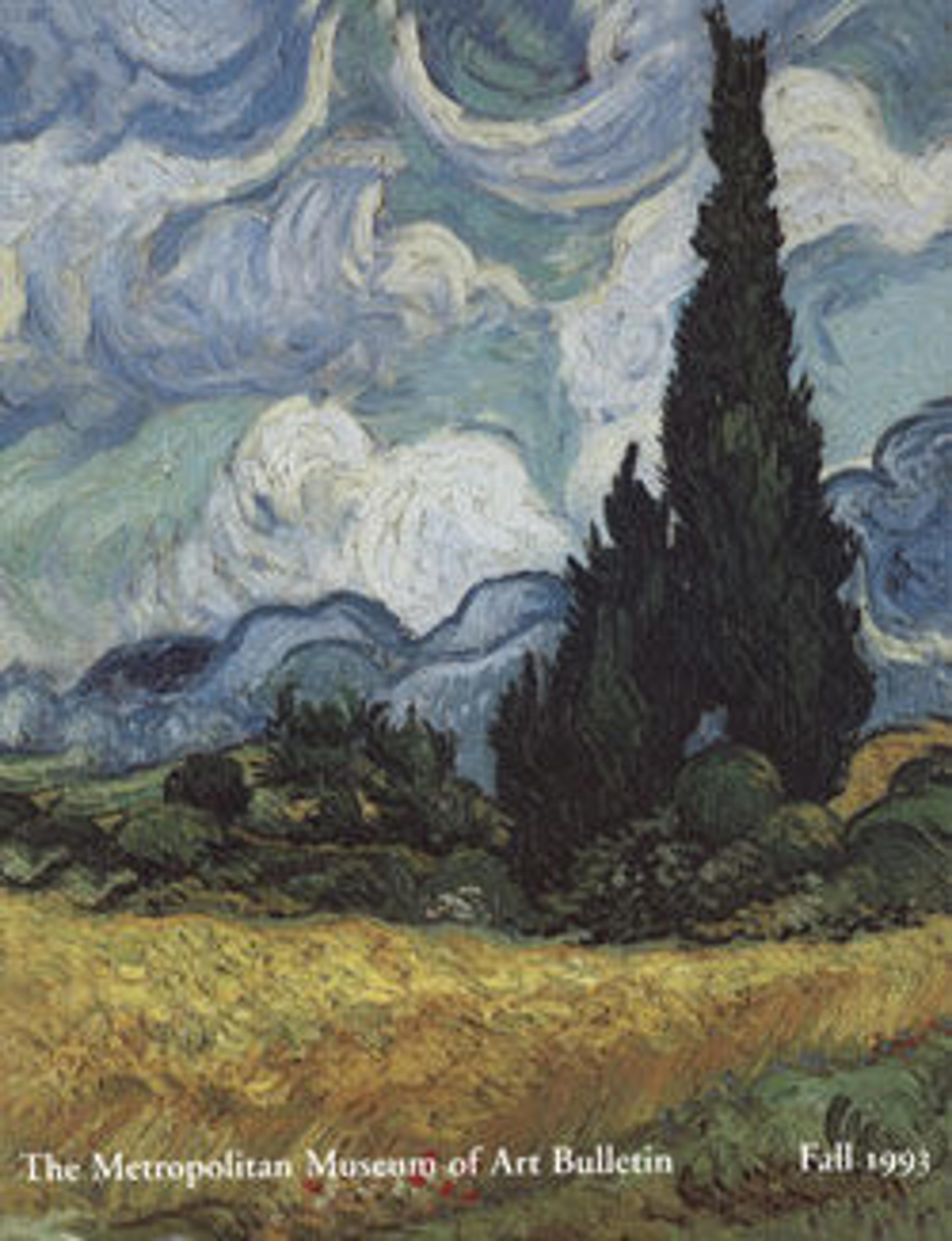Settee
George Hunzinger was one of the most innovative cabinetmakers of his day. He drew inspiration from both historical sources and modern machinery, and he pioneered novel manufacturing methods, securing at least twenty-one patents. This striking settee, defined by bold geometric shapes, is one of his most progressive designs. It incorporates interchangeable parts and employs an ingenious technique Hunzinger patented in 1876 that involves weaving flat steel wire covered with a continuous woven textile into a grid pattern. The seat, back, and arms are each composed of only two wires, with one running in each direction. Hunzinger proudly asserted that this would ensure "great strength and beauty."
This settee, one of only two known examples of this kind, was part of a suite of furniture Hunzinger made that included two armchairs, four side chairs, and a table. Hunzinger was a pioneer in the use of interchangeable parts and drew directly from his design for the settee to create the armchairs and side chairs. Born in Tuttlingen, Germany to a family of furniture makers dating back to the seventeenth century, Hunzinger continued this line of work after immigrating to the United States. Embracing the efficiencies of industrialization, Hunzinger produced relatively inexpensive and high-quality furniture accessible to middle-class Americans. This settee employs Hunzinger’s sixth patent for its woven wire upholstery, which modified Chester D. Flynt’s 1876 patent intended for "Improvement in Carriage-Seats." Inspired by that patent’s use of wire bands, Hunzinger saw continuous flat steel wiring as an alternative to furniture canning and patented his own technique later that year.
This settee, one of only two known examples of this kind, was part of a suite of furniture Hunzinger made that included two armchairs, four side chairs, and a table. Hunzinger was a pioneer in the use of interchangeable parts and drew directly from his design for the settee to create the armchairs and side chairs. Born in Tuttlingen, Germany to a family of furniture makers dating back to the seventeenth century, Hunzinger continued this line of work after immigrating to the United States. Embracing the efficiencies of industrialization, Hunzinger produced relatively inexpensive and high-quality furniture accessible to middle-class Americans. This settee employs Hunzinger’s sixth patent for its woven wire upholstery, which modified Chester D. Flynt’s 1876 patent intended for "Improvement in Carriage-Seats." Inspired by that patent’s use of wire bands, Hunzinger saw continuous flat steel wiring as an alternative to furniture canning and patented his own technique later that year.
Artwork Details
- Title: Settee
- Maker: George Jakob Hunzinger (1835–1898)
- Date: ca. 1876–85
- Geography: Made in New York, New York, United States
- Culture: American
- Medium: Ebonized cherry, fabric-covered steel mesh
- Dimensions: 39 5/8 x 67 3/8 x 22 5/8 in. (100.6 x 171.1 x 57.5 cm)
- Credit Line: Friends of the American Wing Fund, 1992
- Object Number: 1992.269
- Curatorial Department: The American Wing
More Artwork
Research Resources
The Met provides unparalleled resources for research and welcomes an international community of students and scholars. The Met's Open Access API is where creators and researchers can connect to the The Met collection. Open Access data and public domain images are available for unrestricted commercial and noncommercial use without permission or fee.
To request images under copyright and other restrictions, please use this Image Request form.
Feedback
We continue to research and examine historical and cultural context for objects in The Met collection. If you have comments or questions about this object record, please contact us using the form below. The Museum looks forward to receiving your comments.
